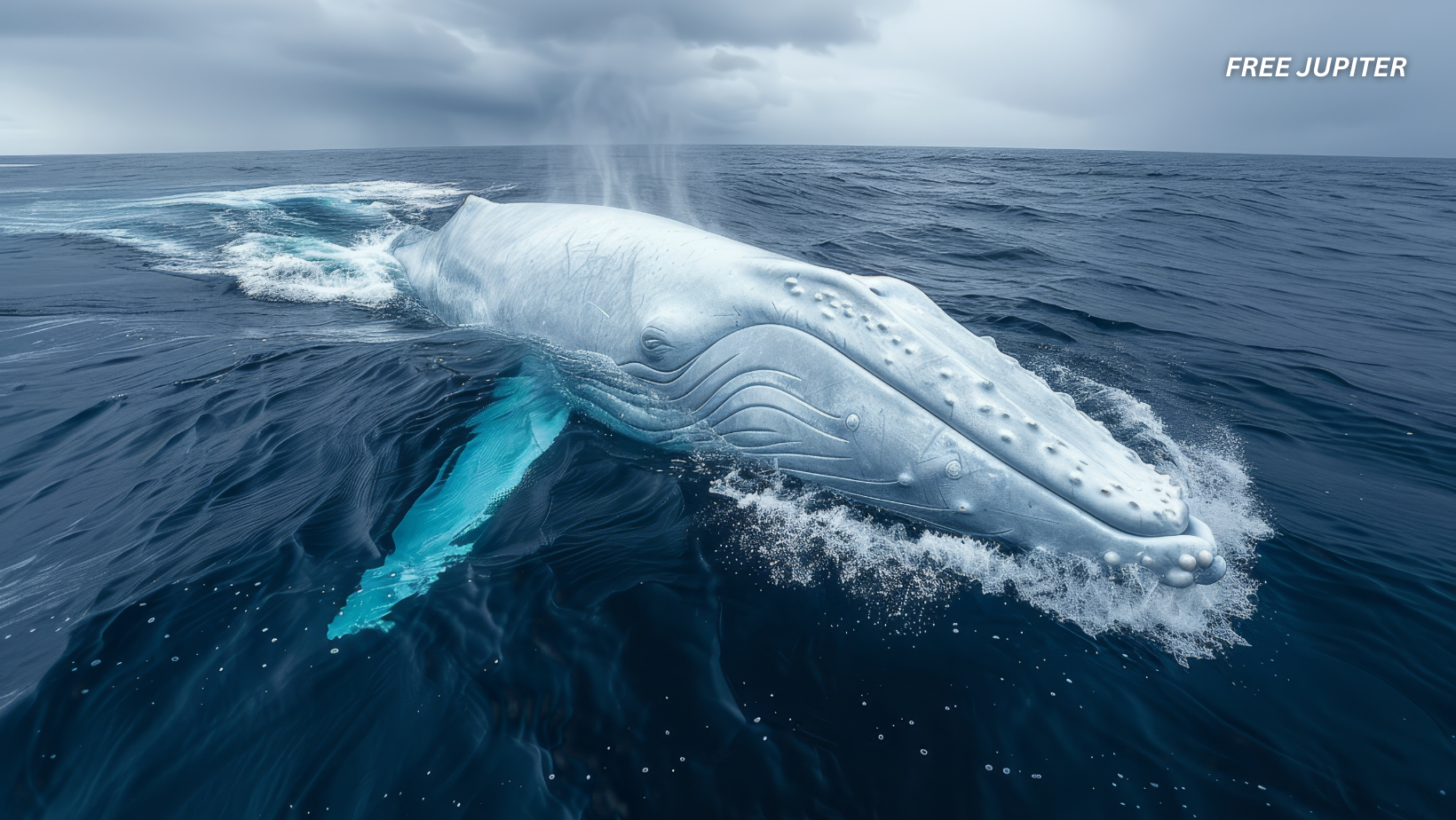For centuries, the blue whale—the largest creature ever to roam our planet—has been a master of underwater acoustics. Its deep, resonant calls can travel across entire ocean basins, cutting through the muffled silence of the deep sea. These songs aren’t just beautiful; they’re functional, acting as a combination of courtship serenade, dinner announcement, and long-distance message service.
Now, however, scientists are hearing an unsettling change: the world’s biggest animal is singing less. And in this case, silence might not mean peace—it could mean trouble.
In certain years, whale song activity has dropped by as much as 40%. The cause, scientists believe, is tied to hunger, climate change, and a fragile ocean ecosystem teetering under stress.
Two Studies, One Troubling Pattern
The concern comes from two major research projects conducted oceans apart. The first, between 2016 and 2018, took place in New Zealand’s South Taranaki Bight, a feeding ground for blue whales. The second, from 2015 to 2020, was set in the California Current Ecosystem, one of the most biologically productive stretches of the Pacific.
Researchers used underwater microphones, or hydrophones, to monitor whale calls over several years. They were particularly interested in the low-frequency pulses linked to feeding coordination and mating behavior.
Both teams spotted the same worrying trend: during marine heatwave years, singing dropped noticeably. In these periods, ocean temperatures rose well above normal for months on end, disrupting not only the whales’ food supply but also their social rhythms.
Read more: Scientists Discover Molecule in Amazonian Scorpion Venom That Destroys Breast Cancer Cells
Why Silence Often Means Hunger
Blue whales are what scientists call “feeding specialists.” Their diet is almost exclusively made up of krill—tiny shrimp-like crustaceans that swarm in dense clouds. A single whale can eat up to four tons of krill a day, filtering them through plates of baleen in its mouth.
Under stable ocean conditions, krill gather in large, predictable swarms, making feeding efficient. But marine heatwaves upset this pattern. Warmer water forces krill to scatter and sink deeper, breaking up the dense formations whales depend on. Finding them becomes less like visiting a buffet and more like searching for scattered crumbs across a dark kitchen floor.
Adding to the problem, heatwaves often trigger harmful algal blooms. These blooms can poison krill directly or disrupt the small plankton they feed on. As krill numbers fall, whales must travel farther and dive deeper, burning precious energy. Singing, though seemingly effortless, is actually a demanding activity. If a whale is already running on an energy deficit, song becomes a luxury it can’t afford.
The Special Vulnerability of Blue Whales
While other whale species, such as humpbacks, can switch their diet to include small fish or other prey, blue whales don’t have this flexibility. Their immense size and specialized feeding system are fine-tuned for filtering krill.
This narrow diet makes them highly dependent on healthy krill populations. In years when krill are scarce, blue whales can’t simply substitute another food source. That puts them in a position of extreme vulnerability—especially when their global population is already small, estimated at fewer than 20,000 individuals.
Even short-term drops in breeding activity can have ripple effects for decades. Since blue whales have long lifespans and slow reproduction rates—typically giving birth to just one calf every two to three years—any disruption in mating success can slow population recovery dramatically.
Songs as a Window into Whale Life
Blue whale songs aren’t random noises. They’re carefully patterned sequences of deep, low-frequency pulses that can travel up to 1,000 miles through the water. These calls serve multiple purposes: males use them to attract females, whales coordinate feeding in scattered groups, and individuals keep track of each other over vast distances.
Because the calls are so low in pitch—often below the threshold of human hearing—scientists rely on hydrophones to detect them. These listening devices can be placed on the seafloor or attached to drifting buoys, recording data for months or even years.
By analyzing changes in the number, timing, and structure of calls, researchers can infer a great deal about whale behavior without ever seeing the animals. This makes whale songs not only a natural wonder but also a critical scientific tool for monitoring ocean health.
Read more: It’s Not Too Late: Plant These 7 Nectar-Rich Flowers Now To Fuel The Hummingbird Migration
A Quiet Trend: The History of Song Decline
The recent drop in the frequency of singing (as in, how often whales sing) is alarming, but it’s not the only change scientists have noticed. Over the past several decades, the pitch of blue whale songs has been steadily declining.
Since the 1960s, the tonal frequency of their calls has dropped by a small fraction each year. There are several theories for this. One suggests that as whale populations have slowly recovered from the devastation of commercial whaling, individuals don’t have to sing as loudly or at as high a pitch to be heard by potential mates. With more whales around, they may simply be “talking” at a more relaxed range.
This long-term pitch change appears to be a gradual adaptation. In contrast, the sharp, year-to-year drop in singing activity seen during marine heatwaves suggests immediate environmental stress. It’s the difference between a species changing its tune naturally over decades and a species going abruptly quiet out of necessity.
What a Quieter Ocean Could Mean for Us
The drop in whale song isn’t just a problem for whales—it’s a potential sign of trouble for the entire ocean ecosystem. Blue whales are apex predators in their own niche, meaning they help regulate the populations of the species they feed on. When their feeding or breeding patterns shift, it hints at disruptions cascading down through the marine food web.
Declining krill populations affect not just whales, but penguins, seals, seabirds, and commercially important fish species. That, in turn, can impact human fishing industries, coastal economies, and the cultural heritage of communities tied to the sea.
In short, when blue whales sing less, it’s a signal that the ocean is changing in ways that could eventually reach the shore.
Read more: Brave Dog Stays Behind in Wildfire to Protect and Save Every Goat in His Care
The Ocean’s Warning Bell—Ringing in Reverse
We tend to imagine warnings as loud, obvious events—sirens, shouts, alarms. But in the ocean, the most urgent warning might be silence.
If the largest animal on Earth is singing less, it’s likely because something essential—food, energy, stability—is missing from its environment. As climate change drives more intense marine heatwaves, this quiet could become more common, and with it, more evidence of ecosystem decline.
The haunting songs of blue whales have survived centuries of hunting and decades of environmental change. Whether they continue to echo through the oceans in the future depends on how well we protect the seas they call home. If we fail, the silence will not be poetic—it will be permanent.










